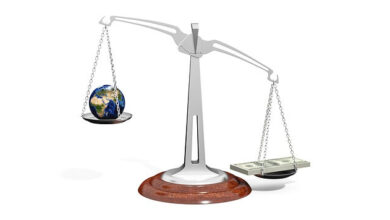Understanding depreciation and appreciation is essential in navigating various aspects of finance, real estate, and accounting. These concepts provide insights into how assets change in value over time, influencing decision-making processes for businesses and individuals alike.
Depreciation refers to the gradual decrease in the value of an asset over time. On the other hand, appreciation signifies an increase in the value of an asset.
These concepts serve as fundamental elements in assessing the financial health of an entity or individual, impacting investment strategies, financial planning, and accounting practices.
Depreciation Vs. Appreciation (A Comparison)
| Depreciation | Appreciation |
|---|---|
| Depreciation refers to the decrease in the value of an asset over time due to wear and tear, obsolescence, or other factors. | Appreciation indicates an increase in the value of an asset over time. |
| Depreciation involves a decrease in value, meaning the asset is worth less over time. | Appreciation involves an increase in value, indicating that the asset is worth more over time. |
| It is typically caused by physical deterioration, technological obsolescence, or other factors that lead to a reduction in the usefulness or functionality of the asset. | It can result from increased demand, improved economic conditions, or factors that enhance the perceived value of the asset. |
| Depreciation is accounted for as an expense on the income statement over the useful life of the asset. | Appreciation is generally not accounted for until the asset is sold. |
| It reduces the reported value of the asset on the balance sheet and increases expenses on the income statement, leading to lower reported profits. | It does not impact financial statements until the asset is sold, at which point the gain is realized and reflected in the financial statements. |
What is Depreciation?
Depreciation is the systematic allocation of the cost of a tangible asset over its useful life. This accounting method acknowledges that assets lose value over time due to wear and tear, technological advancements, or obsolescence.
Rather than recognizing the entire cost of the asset upfront, depreciation spreads the cost over several accounting periods.
Types of Depreciation
- Straight-Line Depreciation: This method evenly distributes the depreciation expense throughout the asset’s useful life. The formula involves subtracting the asset’s salvage value from its initial cost and dividing it by the estimated useful life.
- Double Declining Balance: This accelerated depreciation method allocates a higher depreciation expense in the earlier years of an asset’s life. The formula involves taking twice the straight-line rate and applying it to the remaining book value of the asset.
- Sum-of-the-Years’-Digits: This method factors in the sum of the digits representing the asset’s useful life. It provides a varying depreciation expense each year, with more significant deductions in the earlier years.
What is Appreciation?
Appreciation is the increase in the value of an asset over time. This positive change can be influenced by various factors such as increased demand, improvements in the asset’s condition, or scarcity in the market. Unlike depreciation, appreciation enhances the overall worth of an asset.
Types of Appreciation
- Economic Appreciation: Economic conditions play a significant role in the appreciation of assets. When a region experiences economic growth, the value of assets within that area tends to rise. This can be seen in the increased demand for goods, services, and real estate.
- Real Estate Appreciation: Real estate appreciation occurs when the value of a property increases due to factors like location, infrastructure development, or overall market demand. Savvy real estate investors monitor these trends to make profitable investment decisions.
Key Differences Between Depreciation and Appreciation
Direction of Value Change
- Depreciation: Involves a decrease in value, meaning the asset is worth less over time.
- Appreciation: Involves an increase in value, indicating that the asset is worth more over time.
Causes
- Depreciation: Typically caused by physical deterioration, technological obsolescence, or other factors that lead to a reduction in the usefulness or functionality of the asset.
- Appreciation: This can result from increased demand, improved economic conditions, or factors that enhance the perceived value of the asset.
Impact on Financial Statements
- Depreciation: Reduces the reported value of the asset on the balance sheet and increases expenses on the income statement, leading to lower reported profits.
- Appreciation: This does not impact financial statements until the asset is sold, at which point the gain is realized and reflected in the financial statements.
Factors Influencing Depreciation and Appreciation
Factors that Contribute to the Depreciation of Assets
- Wear and Tear: Physical assets naturally degrade over time with regular use. Machinery, vehicles, and equipment are subject to wear and tear, impacting their functionality and value.
- Technological Advancements: As technology evolves, assets may become outdated or less efficient. This is particularly evident in industries where rapid technological advancements render existing equipment or machinery obsolete.
- Market Conditions: Fluctuations in market demand and supply can influence the value of assets. If a particular product or service loses popularity, the associated assets may experience a decline in value.
Factors that Lead to the Appreciation of Assets
- Increased Demand: A fundamental driver of asset appreciation is increased demand. When the market desires a particular asset, whether it’s a product, service, or real estate, its value tends to rise.
- Scarcity: Limited availability can create a sense of scarcity, driving up the perceived value of an asset. This is often observed in markets where resources are finite or unique.
- Improvements and Upgrades: Assets that undergo improvements or upgrades tend to appreciate in value. This is especially true in real estate, where renovations and modernizations can significantly enhance a property’s worth.
Financial Implications
Understanding depreciation and appreciation is fundamental in financial planning as it directly impacts an entity’s bottom line. By accurately accounting for these factors, businesses and individuals can project future cash flows, assess the return on investments, and make strategic decisions to optimize financial outcomes.
Businesses can use depreciation to manage tax liabilities by taking advantage of allowable deductions. By understanding appreciation, they can identify lucrative investment opportunities and strategically allocate resources for growth.
Similarly, individuals can leverage these concepts to make informed decisions on property investments, vehicle purchases, and other significant financial transactions.
Depreciation and Appreciation in Real Estate
Real estate is a prime example of how depreciation and appreciation impact investments. Properties can depreciate due to aging infrastructure or poor maintenance, leading to decreased value.
Conversely, strategic improvements, renovations, or favorable market conditions can contribute to the appreciation of real estate assets.
Examples of How Properties Can Either Depreciate or Appreciate and the Impact on Investment Decisions
Properties located in areas experiencing economic growth, improved infrastructure, and increased demand tend to appreciate. On the other hand, properties with inadequate maintenance, outdated features, or declining neighborhoods may depreciate.
Investors can use this knowledge to identify properties with potential for appreciation, maximizing their returns.
Conclusion
In summary, depreciation and appreciation are critical concepts with far-reaching implications in finance, real estate, and accounting. Depreciation involves the gradual decrease in asset value over time, while appreciation signifies an increase. Various factors contribute to these changes, from wear and tear to market conditions.
Understanding these concepts is vital for accurate financial reporting, strategic decision-making, and optimizing investment returns.


